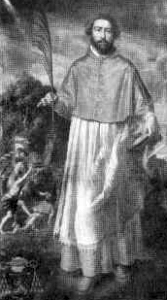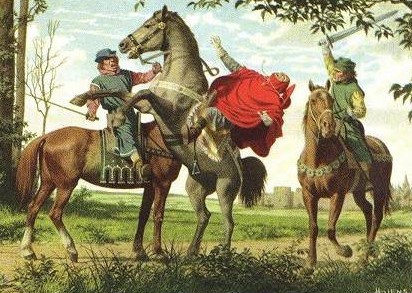Albert received his education at the Saint-Lambert cathedral school in Liège. Upon hearing of the fall of Jerusalem in 1187, Albert resigned his ecclesiastical offices, took the cross, and had himself knighted to join the crusades. Cardinal Henry of Albano restored his ecclesiastical status a year later.
In 1188, Albert became the Archdeacon of Liège and received the subdiaconate in 1191. Later that year he was elected Bishop of Liège despite the fact that he had not reached the canonical age of 30. Gilbert of Mons, chancellor of Count Baldwin V of Hainaut, who attended the election, along with other princes and nobles, described the proceedings as a power struggle between Albert's brother Henry and Baldwin.
As usually happens in power struggles involving family during this age, Albert's appointment was opposed by Baldwin, who had a second group of canons elect his own relative, Albert de Rethel. Because of the dispute, the Emperor supported Lothar of Hochstaden, provost of the church of St. Cassius in Bonn and brother of Count Dietrich of Hochstaden.
Albert appealed to Pope Celestine III in Rome and in May 1192, the Pope made Albert a cardinal, and ordained him in Rome as a deacon on May 30, 1192. He was then ordained to the priesthood on September 19, 1192 by Cardinal Guillaume de Champagne. He received episcopal consecration the next day and celebrated his first mass on September 21 in the Reims Cathedral.
Later that year, Albert met three German knights who persuaded him to ride with them outside of Reims where they they attacked Albert with their swords and killed him. Reaction was swift and fierce as the princes of Lower Lorraine led by the dukes of Brabant and Limburg exacted their revenge by practically razing the territory of Dietrich of Hochstaden.
Coward that he was, Bishop-elect Lothar fled to the imperial court where he was excommunicated by the Pope. The assassins also fled to the imperial court to escape punishment as Emperor Henry turned a blind eye, perhaps because he played a silent role in the assassination of the Bishop Albert.
Bishop Albert de Louvain holy reputation soon spread after his death and he was hailed as a martyr. Pope Paul V canonized him on August 9, 1613 and instituted his feast day as the date of his death. His body remained buried in Reims until 1921 and then moved to Brussels.
Albert received his education at the Saint-Lambert cathedral school in Liège. Upon hearing of the fall of Jerusalem in 1187, Albert resigned his ecclesiastical offices, took the cross, and had himself knighted to join the crusades. Cardinal Henry of Albano restored his ecclesiastical status a year later.
In 1188, Albert became the Archdeacon of Liège and received the subdiaconate in 1191. Later that year he was elected Bishop of Liège despite the fact that he had not reached the canonical age of 30. Gilbert of Mons, chancellor of Count Baldwin V of Hainaut, who attended the election, along with other princes and nobles, described the proceedings as a power struggle between Albert's brother Henry and Baldwin.
As usually happens in power struggles involving family during this age, Albert's appointment was opposed by Baldwin, who had a second group of canons elect his own relative, Albert de Rethel. Because of the dispute, the Emperor supported Lothar of Hochstaden, provost of the church of St. Cassius in Bonn and brother of Count Dietrich of Hochstaden.
Albert appealed to Pope Celestine III in Rome and in May 1192, the Pope made Albert a cardinal, and ordained him in Rome as a deacon on May 30, 1192. He was then ordained to the priesthood on September 19, 1192 by Cardinal Guillaume de Champagne. He received episcopal consecration the next day and celebrated his first mass on September 21 in the Reims Cathedral.
Later that year, Albert met three German knights who persuaded him to ride with them outside of Reims where they they attacked Albert with their swords and killed him. Reaction was swift and fierce as the princes of Lower Lorraine led by the dukes of Brabant and Limburg exacted their revenge by practically razing the territory of Dietrich of Hochstaden.
Coward that he was, Bishop-elect Lothar fled to the imperial court where he was excommunicated by the Pope. The assassins also fled to the imperial court to escape punishment as Emperor Henry turned a blind eye, perhaps because he played a silent role in the assassination of the Bishop Albert.
Bishop Albert de Louvain holy reputation soon spread after his death and he was hailed as a martyr. Pope Paul V canonized him on August 9, 1613 and instituted his feast day as the date of his death. His body remained buried in Reims until 1921 and then moved to Brussels.
Family Members
Advertisement
Explore more
Sponsored by Ancestry
Advertisement






